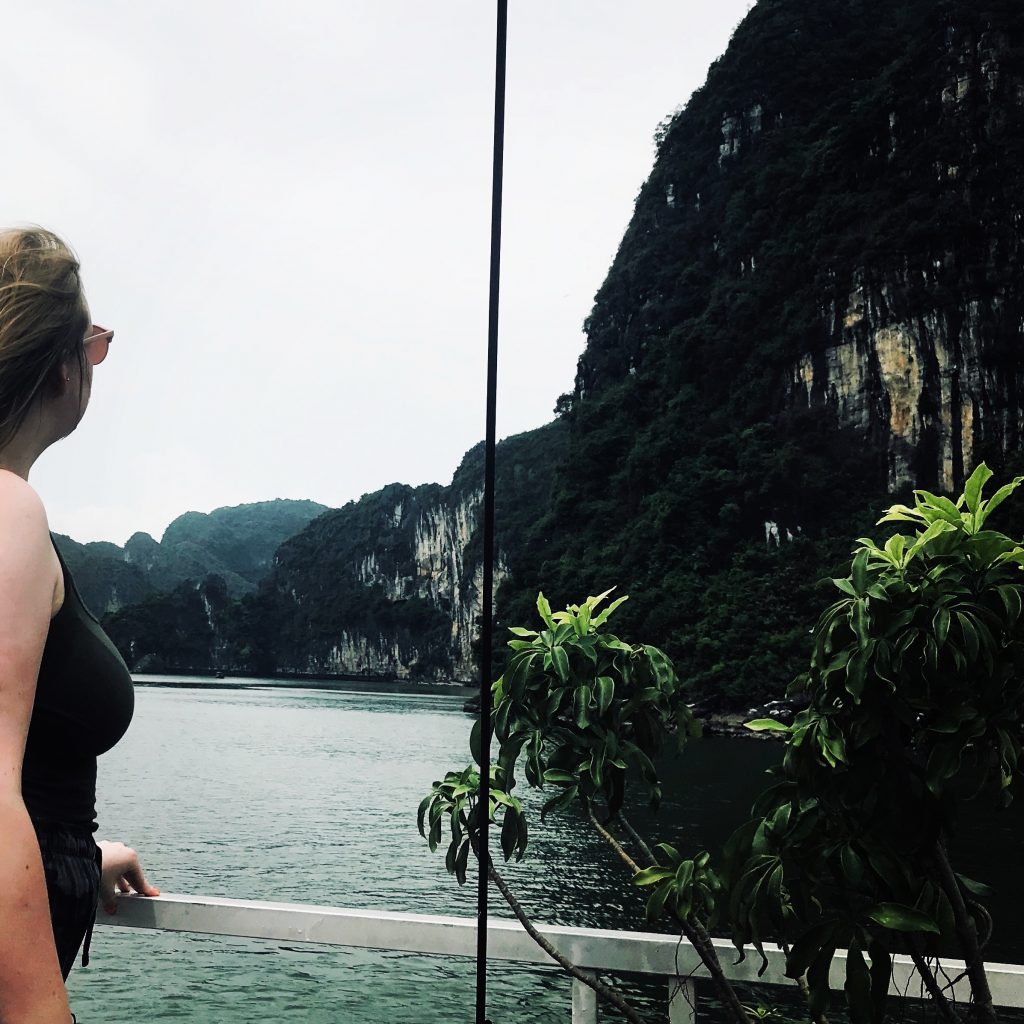‘Ha Long’ way from home…


A recent trip to Ha Long Bay in the North East of Vietnam, had me thinking of home. Hanoi city is in the middle of rapid urbanisation with new buildings popping up all over this busy city. The roads are full of motorbikes and scooters, and in more recent times- cars. Car ownership is on the rise however in comparison to other countries remains relatively low. As of 2016, there were only 291,000 cars in Hanoi which is a ratio of 16 cars per 1,000 people according to VietnamNET- the first English written, online newspaper in Vietnam. Although a fantastic city with many beautiful designated green areas, the dust from the buildings and the emissions from the vehicles had me craving a journey outside the city boundaries.
A guided tour was booked to Ha Long Bay, a 3-and-a-half hour bus journey from where I live. We had lunch aboard the boat and commenced on our journey into the bay. The National Geographic states Ha Long Bay consists of around 1600 limestone islands and islets and is an area rich in biodiversity. It covers an area of 1600 km and in 1994, was declared a UNESCO World Heritage Site. ‘Ha Long’ in Vietnamese means ‘descending dragon’. Dragons play an important role in Vietnamese culture and the story behind Ha Long Bay is about a dragon and her children who descended to defend the Viet people from invaders by spraying jade or emerald jewels. These jewels then created the limestone formations.
Hanh Tran, lecturer of South and Southeast Asian studies at the University of California, Berkeley stated that “These legends strike a chord with Vietnamese beliefs and history in two ways. First, the history of fighting against invaders. Second, the belief that Viet people are descended from a dragon father (Lac Long Quan) and a fairy mother (Au Co), and that there is a sacred, hidden power to support them in their war efforts.” From a scientific standpoint, Robert Brinkmann, professor of geology, environment, and sustainability at Hofstra University in New York stated (it is) “a very evolved, very advanced, unusual looking karst landscape.”
Ha Long Bay is very beautiful and I would absolutely recommend anybody to go. As a person who lives near the sea in the West of Ireland, the trip was exactly what I needed. The bay is extremely busy with tourism and that is something that needs to be kept in mind. Tourism is an essential factor in increasing economic development. However, sustainable development is also key to ensuring future tourism. The influx of tourism on an area that is known for its ecology can have damaging effects on the natural environment. Plastic and pollution are two key drivers of such negative change but if these are kept in check, the Bay will continue to prosper for many years to come.
